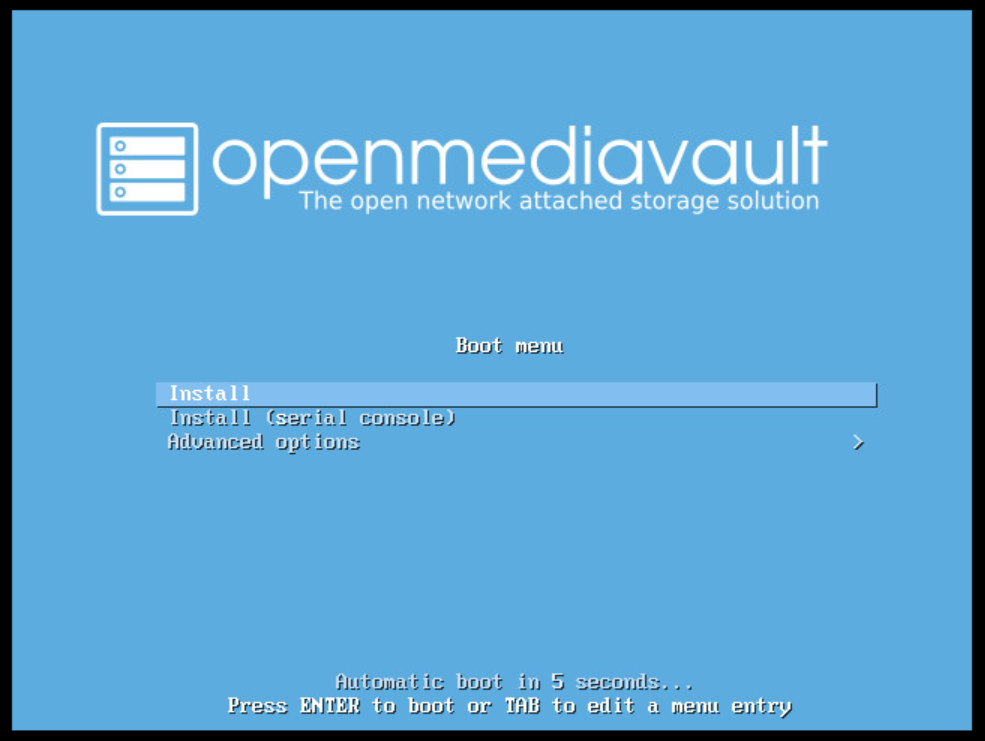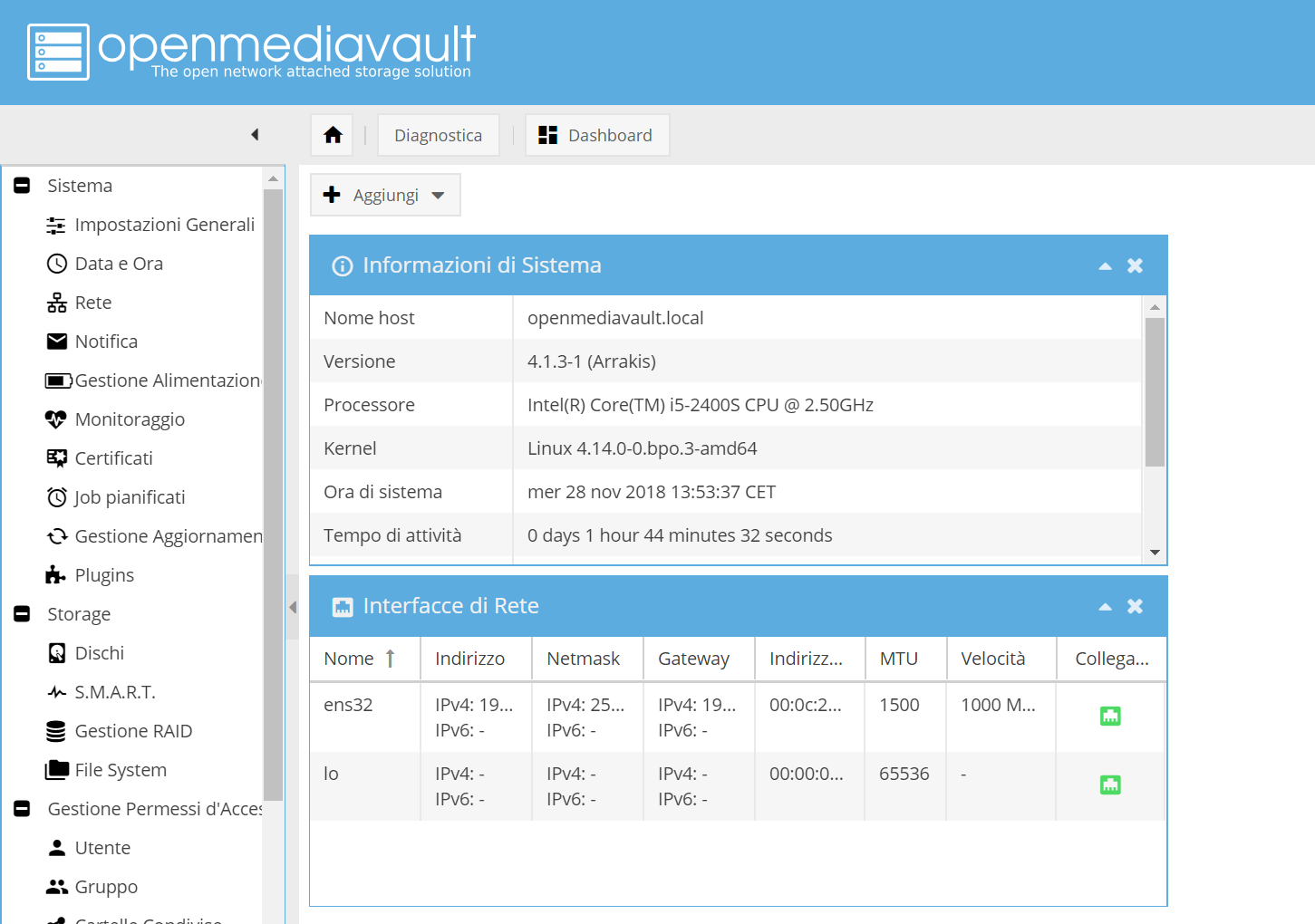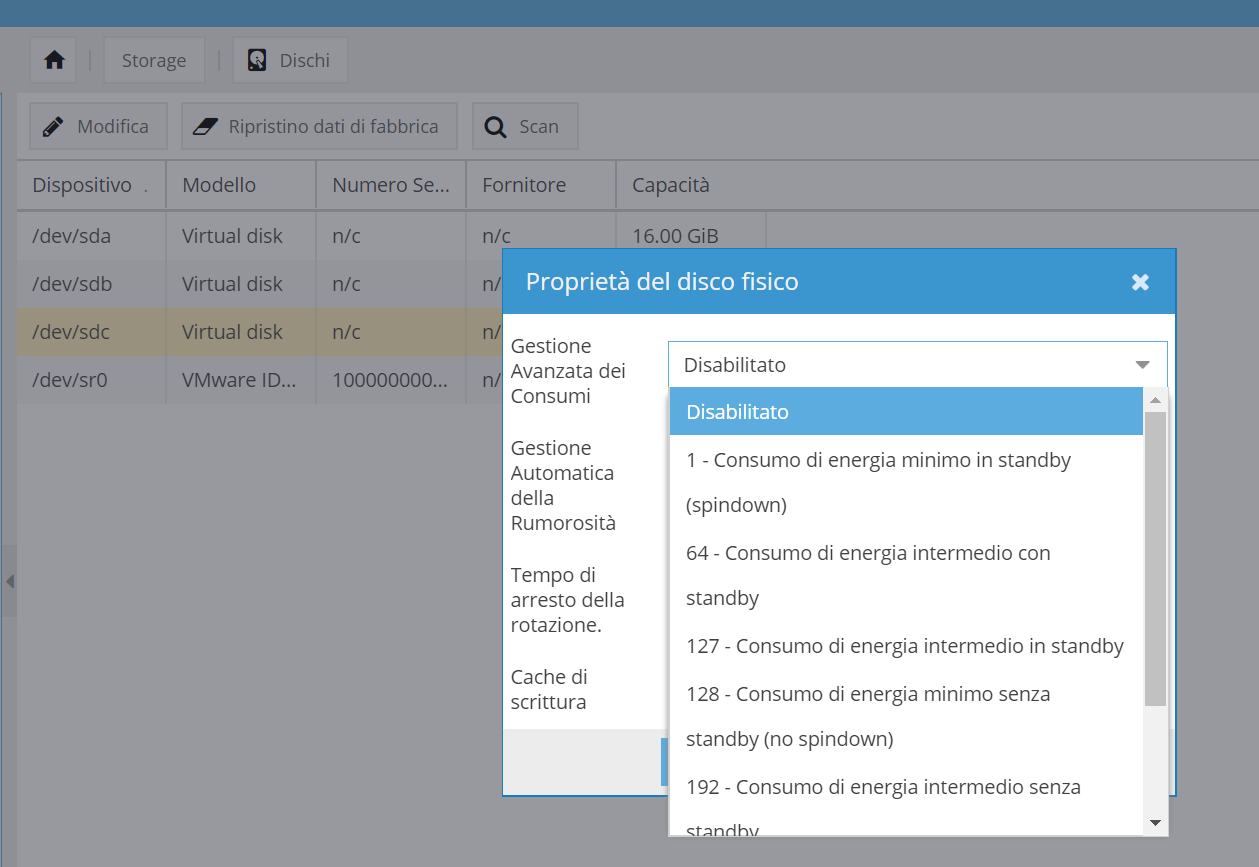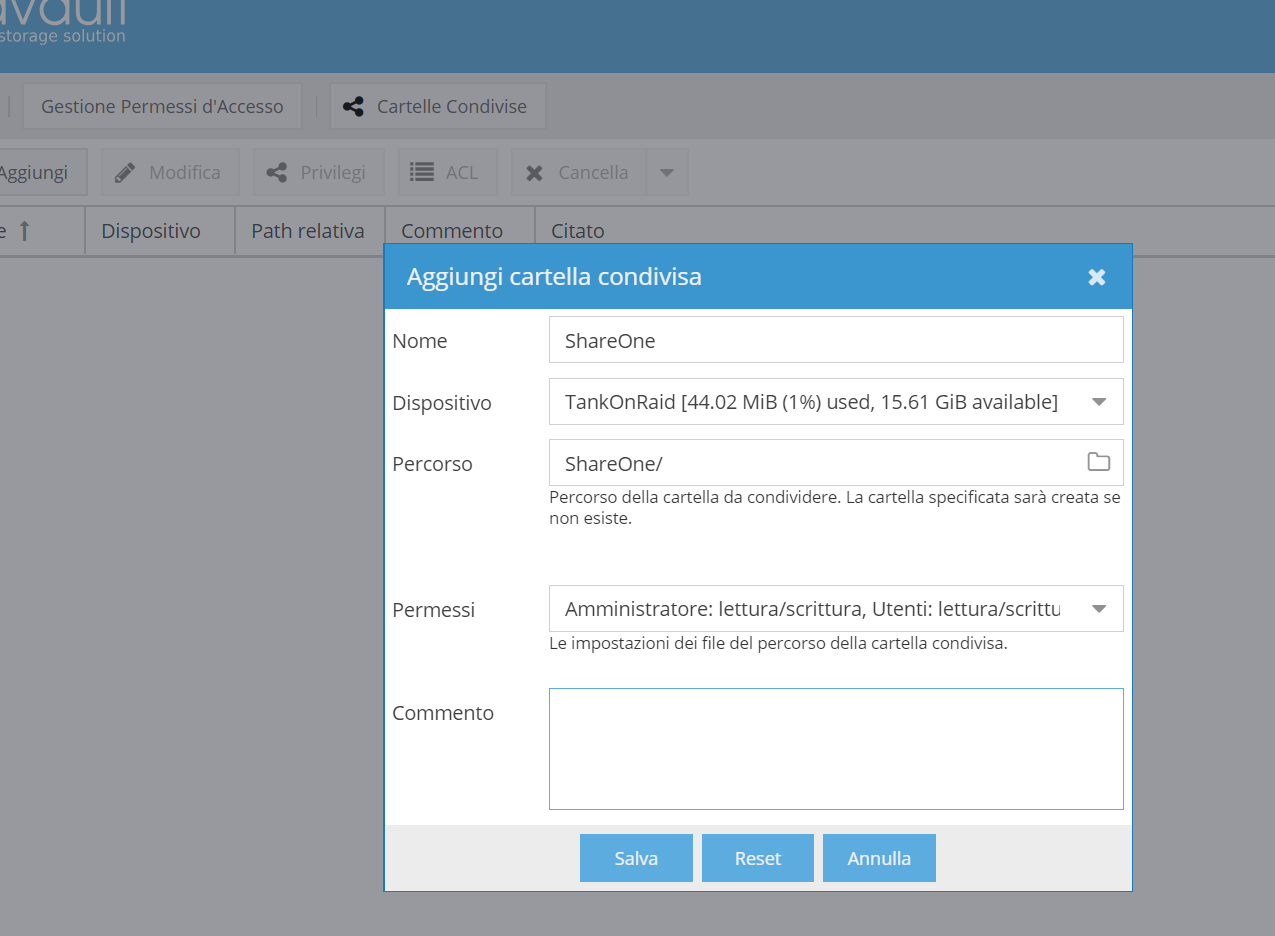We at GURUadvisor we’ve often talked about FreeNAS as a strong and evaluated open-source platform for the realization of NAS systems (even with non-dedicated hardware). We’ll now analyze an interesting alternative, open-source too, by discovering key features and weaknesses.
Openmediavault -or OMV for the sake of brevity, is a Debian based operating system, optimized and customized for the implementation of Network Attached Storage solutions: its main field of use is in labs, homes and SMBs. The main features include the support to the main network services (SSH, FTP, SMB/CIFS, Rsync and so forth), logic volumes management, S.M.A.R.T. checks on disks, email notifications, link aggregation and plugins to further expand its features.
Main Features
First let’s clear things by comparing OMV and FreeNAS: unlike FreeNAS, natively OMV neither uses nor supports ZFS: as a consequence, it can’t guarantee the high levels of data management and protection offered by ZFS. ZFS can be installed with a plugin, however. Therefore migrating and importing volumes from FreeNAS on OMV is not supported.
Supported file systems include ext3, ext4, XFS and JFS; RAID levels include RAID0, 1, 5, 6 and 10, alla managed with the MDADM Linux tool. See here for a detailed comparison.
Useful user tools include activity scheduling and a complete users and groups management feature; disks and volumes management-wise we have rather welcome feature that isn’t available on FreeNAS: the fine-tuning of disks power management. The feature allows to set energy saving and automated shutdown.
In terms of monitoring, we can find a complete assortment of features with Syslog, Watchdog, S.M.A.R.T. tests and the support to SNMP and trigger-sent notifications. The path to control these settings is Diagnostics > System Information, which also offers a useful section with real-time graphs on resource consumption.
Installation and Interface
OMV can be installed with official ISO available at this address; the installation is quick and ends up in a raw Linux shell. The main configuration, and further management, is from a Web interface which can be accessed from the machine’s IP address: no particular ports are to be configured, and a valid SSL certificate can be added to enable HTTPS sessions. Note that default credentials are not the ones provided at OS installation time but are admin/openmediavault, to be changed as soon as possible.
The dashboard is organized with the main menu on the left and the rest of the viewport dedicated to the quick visualization of tiles (customizable). Features are not a lot, so one can quickly access anything with no misunderstandings or complexities. Translation is perfect apart from a couple of strings that, occasionally, appear in English.
Macro-areas like System, Storage, Services, etc.. are organized vertically with sub-items, so that one can move smoothly between settings with a very intuitive usage.
Disks and Volumes Management
As said before, OMV can create software RAID arrays up to RAID 10 with mdadm. The creation of a new array is quite intuitive thanks to the RAID Management menu voice: select the type of configuration and select which disks are to be part of it. A couple of seconds and the array becomes available.
The Disks section introduces physical disk management with a list of units identified by the system, a check on their state, details and re-initialization.
As the logical volume is created, the file system itself can be created. It’s the one that will be used for network sharing services.
To do that, access the dedicated section, select the device (ie the newly-created RAID array) and set the file system structure. For the ease of future use, you can assign a custom tag.
The sole creation however is not enough to the actual usage: the file system has to be mounted with the Mount button.
After setting up every required file system, you can start to work on quota management and to resize them, if needed.
Once everything is set up, services like SMB, NFS and AFP can be activated in order to share network folders from the Shared Folders menu. This panel offers to choose the device or folder to share, its name and permissions for admins and regular users. Regarding that, ACLs can be managed by means a complete and intuitive panel within the single shared folder.
Final Remarks
Overally, Openmediavault is an interesting solution for NAS systems with generic white-box hardware and for low-budget solutions with a good level of data safety and access control. The usage of mdadm -also used by the firmware of commercially available NAS units- for RAID array management avoids the limitation of being tied to a specific system, like ZFS and FreeNAS. After a failure, disks can be read by other Linux machines, thus giving a valuable advantage. Monitoring and reporting are complete, and so is the assortment of plugin which enables the expansion of features, adding further value to the product.




